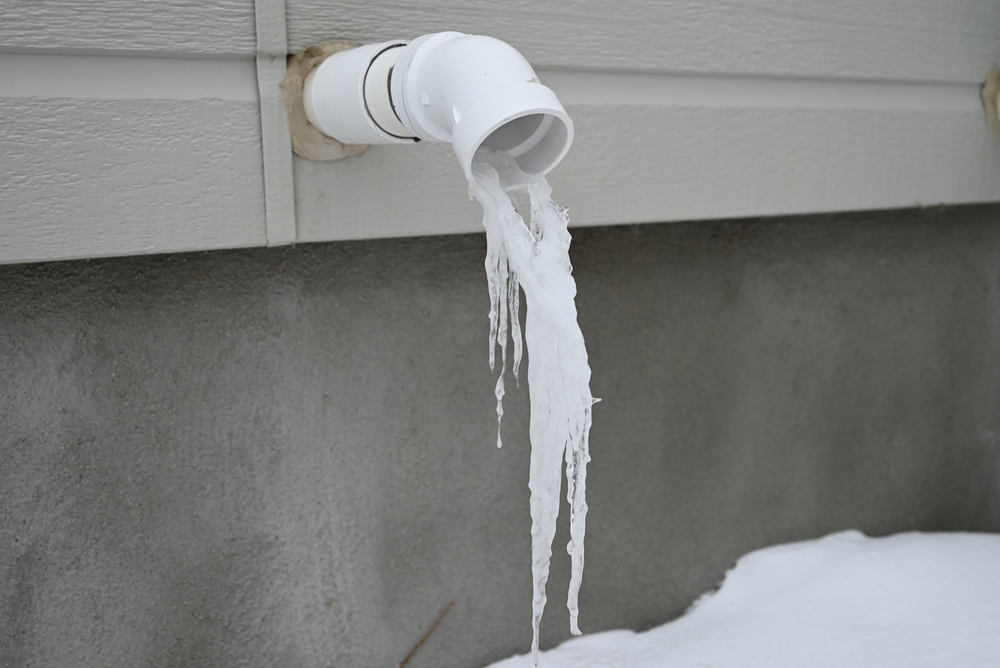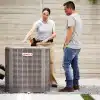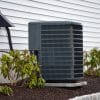
As winter tightens its grip, the threat of a frozen furnace exhaust looms, posing risks to both efficiency and safety. In this article, we are going to walk you through the effective ways to prevent a furnace exhaust from freezing. Keep reading to learn more!
Signs of a frozen furnace exhaust
A frozen furnace exhaust can cause significant issues with your heating system. Here are some signs to look out for:
1. Furnace Stops Working or Fails to Start
One of the most immediate signs of a frozen exhaust is the furnace not starting or stopping abruptly. Many modern furnaces are equipped with safety features that shut down the system if the exhaust pipe is blocked.
2. Error Codes or Warning Lights
Furnaces often have diagnostic systems that display error codes or warning lights when there is a problem. A blockage in the exhaust could trigger these indicators.
3. Unusual Noises
Gurgling or bubbling sounds coming from the exhaust pipe could indicate that water has condensed and frozen inside the pipe.
4. Ice Buildup Around Exhaust Vent
Visually inspect the exterior exhaust vent. Ice accumulation or a noticeable blockage of snow or ice is a clear indicator.
5. Poor Heating Performance
If the exhaust pipe is partially blocked, it might not shut down the furnace completely but could lead to inefficient operation, resulting in poor heating performance.
6. Water Leakage
When the ice starts to melt, it might cause water to leak around the area of the exhaust vent.
Common causes of a frozen exhaust
Several factors can cause frozen furnace exhausts, often related to environmental conditions and maintenance issues. Frequently, environmental conditions and maintenance issues are the main factors causing frozen furnace exhausts. Here are some common reasons:
1. Severe Cold Weather
Extremely low temperatures can lead to ice forming in and around the exhaust vent, especially if there’s moisture in the air.
2. Improper Venting Installation
If the exhaust vent is not installed with a proper slope or is too long, it can lead to condensation accumulating and freezing inside the vent.
3. Blocked or Restricted Exhaust Vent
External blockages like snow, ice, or debris accumulating around the exhaust vent can lead to freezing. Internal blockages, such as bird nests or other obstructions, can also cause problems.
4. High Humidity
High humidity levels can increase the amount of condensation in the exhaust gases. In cold weather, this condensation can freeze, leading to ice formation in the vent.
5. Furnace Short Cycling
If your furnace frequently turns on and off over short periods (short-cycling), it may not heat the exhaust gases sufficiently to prevent condensation and freezing.
6. Lack of Regular Maintenance
Regular furnace maintenance is crucial to ensure the furnace and its exhaust system are functioning properly. Neglect can lead to issues that may contribute to freezing.
How to prevent furnace exhaust from freezing in the winter
To keep your furnace exhaust from freezing during the cold winter months, there are several steps you can take. These measures are not only about ensuring efficiency but also about maintaining the safety of your heating system:
1. Ensure Proper Installation
First, make sure your furnace and exhaust vent are correctly installed. This is crucial for effective functioning. If you’re unsure, it’s always a good idea to have a professional check your furnace installation.
2. Regular Maintenance Checks
It’s important to get your furnace and exhaust system inspected and serviced regularly. This way, you can catch any potential issues early on.
3. Keep the Area Clear
After snowfalls, take a moment to clear any snow, ice, or debris accumulated around the exhaust vent. This helps keep the vent clear and reduces the risk of freezing.
4. Consider a Condensing Furnace
If you’re looking for a new furnace, look at high-efficiency condensing models. These are designed to handle condensation more effectively.
5. Prevent Short Cycling
Make sure your furnace isn’t turning on and off too frequently. If it is, it might not be the right size for your home, or there could be an issue with your thermostat.
If your furnace stops working during winter, you should call an HVAC technician for a furnace repair as soon as possible to avoid further damage to the entire HVAC system.
FAQs
How can I tell if my exhaust vent installation is proper to prevent freezing?
Proper installation is critical to preventing freezing. The exhaust vent should have a slight slope back to the furnace and be free of sharp bends or long horizontal runs. If you’re unsure, have a professional inspect the installation.
Can a frozen exhaust vent damage my furnace?
Yes, a frozen exhaust vent can cause damage to your furnace. It can lead to improper venting of gases, causing the furnace to work inefficiently or shut down as a safety precaution.
How often should I check my furnace exhaust vent in winter?
Regular checks are crucial, especially after heavy snowfall or extreme cold snaps. Monthly inspections are recommended, with more frequent checks during severe weather conditions.
Should I try to thaw a frozen furnace exhaust myself?
Thawing a frozen furnace exhaust can be risky. If you notice ice buildup, it’s safer to call a professional. They can safely thaw the vent and check for any other issues that might need attention.
Conclusion
Safeguarding your furnace exhaust from freezing is essential for a warm and trouble-free winter. You can implement the discussed preventive measures to ensure optimal home heating system performance. If you encounter persistent issues or suspect a frozen exhaust, don’t hesitate—call a professional furnace repair service promptly.





